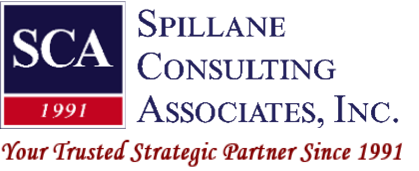How to "Cure" a Non-QM Loan
By: Greggory B. Oberg, Esq.
Among the provisions of the ATR/QM Rule is a limitation on points and fees. Under TILA, a mortgage cannot obtain "Qualified Mortgage" status where the total points and fees charged to the borrower exceed defined thresholds. In most circumstances relevant to the New England market, this is 3% of the loan amount.
Pretty clear standard...so what happens if we accidentally originate what we thought was a QM loan, but later determine is ineligible under the points and fees test? At first glance, you might suppose the answer is "put it in the portfolio."
However, for the next 14 months or so, there is hope for these loans. Similar to the "sunset" provision built into the QM Patch, this "Points and Fees Cure Mechanism" is here for a limited time. Until January 21, 2021, lenders will be able to make refunds of excess fees to borrowers in order to "cure" the defect preventing an otherwise QM loan from obtaining QM treatment.
What the "Cure Mechanism" Requires
First and foremost, the loan must otherwise meet the ATR/QM rule. This mechanism will only cure loans which, but-for the excessive points and fees, would be considered QM.
Second, we must identify and resolve the issue within 210 days consummation. Compared with the post-consummation error resolution provisions on CD cures of 60 days, the 210 provided by ATR/QM is certainly enough time for us to catch and fix problems. QC departments should have more than enough time to identify these issues.
This is subject to a few caveats:
The issue must be identified by somebody other than the consumer. If the consumer brings the issue to the attention of the lender or assignee prior to the cure being made, the loan is precluded from QM treatment.
The consumer cannot be 60 days pas due or have initiated any action against the lender.
The creditor must have policies and procedures in place for post-consummation reviews of points and fees.
As with any "written procedures" requirement, the implication here is that they are actually followed effectively. The rule intends to provide a "no harm, no foul" type of resolution in which the borrower is refunded for "unfair" points and fees, and the lender is incentivized to do so with QM treatment as a carrot.
To summarize, if lenders maintain procedures to check the points and fees against the 3% cap during post-closing review, identify the issues in a timely manner, and make refunds to borrowers of any excess, then the loan can still obtain QM treatment. The exception here is if the borrower is clearly demonstrating an inability to repay, such as by bringing action, failing to make payments, or raising the excess points and fees issue with the lender.
The Cure Rule will expire on January 21, 2021. Any loan consummated on or before this date can be cured. Moving forward, it will be interesting to see what attention is paid to this sunset provisions, and whether the CFPB will request comment on extension similar to the QM patch Rulemaking process.
###
Spillane Consulting Associates has served the residential mortgage lending business since 1991. We specialize in mortgage banking consulting services and provide quality control reviews, risk management, process consulting and employee training to credit unions, community banks and non-depository institutions. We are a thought leader on the strategic growth of residential mortgage lending.
SCA Compliance Hotline: Need a question answered quick?
Email: Compliance-Question@scapartnering.com
Call: (781) 356-2772
Thanks so much for reading our weekly newsletters. We're not always going to be perfect, but because we always do our best and try not to overpromise, we hope that we're always going to be trustworthy. Your calls and e-mails are very helpful - please keep contributing.
**These are our opinions. We're not authorized, or willing, to express those of others.**

